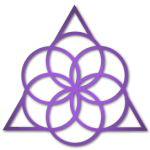In the first 120 days of teaching Bowspring, Desi and I found that a wide range of students are increasingly positive and enthusiastic about the transformative powers of the Bowspring postural alignments. However, almost universally, new students have difficulty with embodying the new Bowspring alignments for the first initial classes.
For this reason, Desi and I are now directing first-time students to an introductory class on Friday nights, which will outline our Bowspring weekend workshops, and then designing the weekends to be more progressive. So, we will no longer permit drop-ins on the last day of a workshop. Also, at Vital Yoga in Denver, beginning Bowspring students will start to go through a one-month introductory program before joining Level One classes.
We have found that there are 3 main reasons why Bowspring is initially found by students to be so challenging:
– The new Bowspring alignments are contrary to the current postural paradigm, and contradictory in many cases to what is being specifically taught for the alignment of the neck, shoulders, lower back, and pelvis. When students have been instructed for years to draw their shoulders down away from their ears; to lower the chin and elongate the back of the neck; to pull the floating ribs back; to draw in the abdomen; and to pull the buttocks flesh downward to elongate the lower back, then there is mental and emotional resistance to -Bowspring that challenges this general postural paradigm, which is widely regarded as anatomically and biomechanically ‘correct.’
-Bowspring alignments emphasize:
arching the top portion of the neck and opening the front of the throat;
expanding the heart region and opening the flexibility of the upper back;
and tipping the bottom of the butt back and widening the pelvic floor open.
Each of these fundamental Bowspring alignments is often felt as strange—emotionally and psychologically uncomfortable, since the 3 areas of the body with the most probable energetic blockages are asked to open in a new and seemingly vulnerable way.
Muscles on the back of the body, particularly the muscles of the neck, shoulderblades, hamstrings, and buttock are often very weak and stiff for most students, so kinesthetic awareness and control of these muscles is often initially poor. In Bowspring we emphasize muscular engagement of the gluteus maximus from insertion to origin of the muscle, but that is often very difficult to feel and control for most students in the beginning. Among the professionals in exercise physiology today is a common term, “dumb butt syndrome”, essentially describing a present inability by many to properly fire up their gluteal muscles. Desi and I think of this poor kinesthetic awareness is a form of neural amnesia due primarily to poor sitting and standing posture.
So in summary, there are 3 main reasons that beginning Bowspring students find the alignments strange and challenging:
1)Bowspring alignments are contrary to the established paradigm.
2)They are emotionally and energetically opening, which can feel very intense.
3)Neural pathways for the key Bowspring muscular actions are often undeveloped, making the mind-body connection difficult, especially in posterior areas of the body like the buttock muscles.
New Bowspring students are informed now in their first class what to expect in the first weeks of practice, so to support them to stay the path in the initial most challenging period. Typical mental blocks and physical challenges on the path of yoga are named upfront to shine the light of awareness onto them.
Bowspring students are guided to be compassionate and kind with their own unique learning curve and healing process. Students, who are open in their minds to new cutting edge ideas; who find some lightness of heart while moving their bodies in socially and psychologically strange positions; and who cultivate the discipline of regularly bringing the mind to dark, unconscious areas of the body, find astounding transformational power in the Bowspring alignments.

